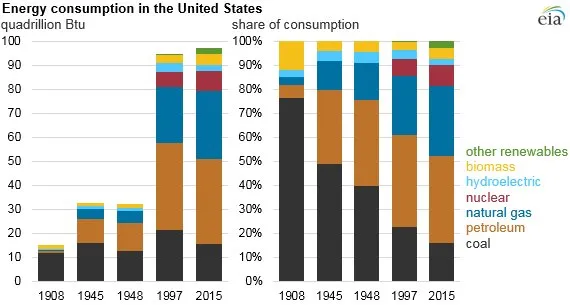Goldman Sachs: 3.8 Billionen Dollar für Erneuerbare Energien senkten den Anteil der Fossilen von 82% auf 81%
Wie wir wissen, liegt der Anteil von Wind und Solar bei rund acht Prozent des Primärenergiebedarfs Deutschlands. Und dafür haben wir schon viel Geld in die Hand genommen. Gut, dass wir nicht allein sind!
Jeff Currie von Goldman Sachs hat es kürzlich auf den Punkt gebracht:
- „’At the end of last year, overall, fossil fuels represented 81 percent of overall energy consumption. Ten years ago, they were at 82. So though, all of that investment in renewables, you’re talking about 3.8 trillion, let me repeat that $3.8 trillion of investment in renewables moved fossil fuel consumption from 82 to 81 percent, of the overall energy consumption. But you know, given the recent events and what’s happened with the loss of gas and replacing it with coal, that number is likely above 82.’ … The net of it is clearly we haven’t made any progress.” – bto: Daraus könnte man die Frage aufwerfen, ob wir eine bessere Strategie finden könnten.

Quelle: Watts Up With That?
- „So when we think about what those renewables have added — because remember, you’re adding capacity, but the capacity utilization factor is quite low on them. And then you have Europe making the investment in there, but China making further investments. The net of it is clearly we haven’t made any progress. And I think the key point that I was saying is that why OPEC is in the driver’s seat, you know, at an unprecedented level is because, you know, we inclusively of everybody outside of OPEC have not adequately invested in overall energy production, infrastructure and the ability to supply and deliver it. (…) countries like Brazil, (…) are actually less exposed to what’s happening right now than let’s say Japan or Europe.” – bto: Weil sie sich nicht in eine solche energiepolitische Sackgasse manövriert haben.







